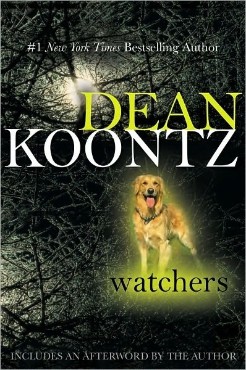On his thirty-sixth birthday, May 18, Travis Cornell rose at five o’clock in the morning. He dressed in sturdy hiking boots, jeans, and a long-sleeved, blue-plaid cotton shirt. He drove his pickup south from his home in Santa Barbara all the way to rural Santiago Canyon on the eastern edge of Orange County, south of Los Angeles. He took only a package of Oreo cookies, a large canteen full of orange-flavored Kool-Aid, and a fully loaded Smith & Wesson .38 Chief’s Special.
During the two-and-a-half-hour trip, he never switched on the radio. He never hummed, whistled, or sang to himself as men alone frequently do. For part of the drive, the Pacific lay on his right. The morning sea was broodingly dark toward the horizon, as hard and cold as slate, but nearer shore it was brightly spangled with early light the colors of pennies and rose petals. Travis did not once glance appreciatively at the sun-sequined water.
He was a lean, sinewy man with deep-set eyes the same dark brown as his hair. His face was narrow, with a patrician nose, high cheekbones, and a slightly pointed chin. It was an ascetic face that would have suited a monk in some holy order that still believed in self-flagellation, in the purification of the soul through suffering. God knows, he’d had his share of suffering. But it could be a pleasant face, too, warm and open. His smile had once charmed women, though not recently. He had not smiled in a long time.
The Oreos, the canteen, and the revolver were in a small green nylon backpack with black nylon straps, which lay on the seat beside him. Occasionally, he glanced at the pack, and it seemed as if he could see straight through the fabric to the loaded Chief’s Special.
From Santiago Canyon Road in Orange County, he turned onto a much narrower route, then onto a tire-eating dirt lane. At a few minutes past eight-thirty, he parked the red pickup in a lay-by, under the immense bristly boughs of a big-cone spruce.
He slipped the harness of the small backpack over his shoulders and set out into the foothills of the Santa Ana Mountains. From his boyhood, he knew every slope, vale, narrow defile, and ridge. His father had owned a stone cabin in upper Holy Jim Canyon, perhaps the most remote of all the inhabited canyons, and Travis had spent weeks exploring the wild land for miles around.
He loved these untamed canyons. When he was a boy, black bears had roamed the woods; they were gone now. Mule deer could still be found, though not in the great numbers he had seen two decades ago. At least the beautiful folds and thrusts of land, the profuse and varied brush, and the trees were still as they had been: for long stretches he walked beneath a canopy of California live oaks and sycamores.
Now and then he passed a lone cabin or a cluster of them. A few canyon dwellers were half-hearted survivalists who believed the end of civilization was approaching, but who did not have the heart to move to a place even more forbidding. Most were ordinary people who were fed up with the hurly-burly of modern life and thrived in spite of having no plumbing or electricity.
Though the canyons seemed remote, they would soon be overwhelmed by encroaching suburbs. Within a hundred-mile radius, nearly ten million people lived in the interconnecting communities of Orange and Los Angeles counties, and growth was not abating.
